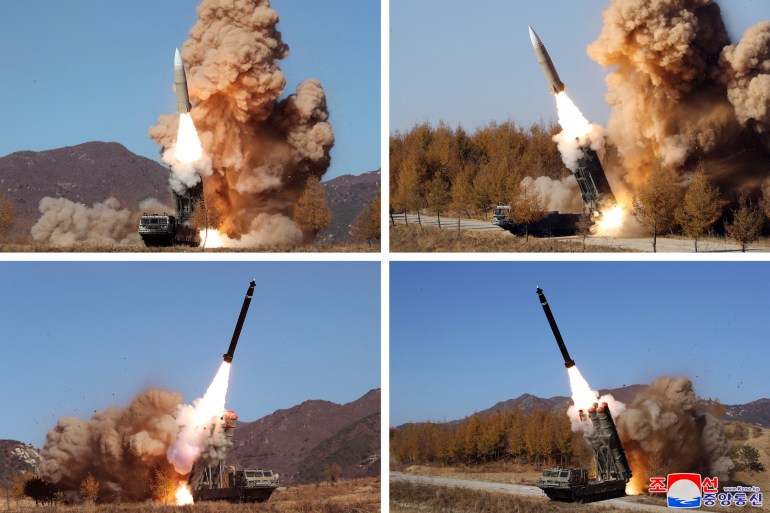N Korea condemns US-S Korea drills, promises ‘merciless’ response
Official KCNA media says recent spate of launches were designed to simulate attacks on air bases, aircraft and a major South Korean city.
North Korea has released images of its recent spate of missile launches, including an intercontinental ballistic missile (ICBM), as it condemned recent military drills between South Korea and the United States as an “open provocation and dangerous war drill” against which it had to respond.
A statement from the General Staff of the Korean People’s Army said North Korea would continue to respond to military exercises by Southern Korea and the US with “sustained, resolute and overwhelming practical military measures”, the official Korean Central News Agency (KCNA) reported on Monday.
North Korea fired multiple missiles last week, including a possible failed ICBM, cruise missiles and hundreds of artillery shells, as South Korea and the US conducted their Vigilant Storm air drills, which were extended from five days to six in response to Pyongyang’s tests.
The North Korean military said the exercises were an “open provocation aimed at intentionally escalating the tension” and “a dangerous war drill of very high aggressive nature,” according to the KCNA report.
Hundreds of US and South Korean warplanes, including B-1B bombers, took part in Vigilant Storm.
It was the first time B-1Bs have flown to the Korean peninsula since December 2017.
North Korea’s army said it had conducted activities simulating various attacks on their air bases and aircraft, as well as a major South Korean city, to “smash the enemies’ persistent war hysteria”, KCNA said. It did not mention whether North Korean leader Kim Jong Un had overseen the launches.
It confirmed firing two apparently nuclear-capable “strategic” cruise missiles on November 2 towards the waters off Ulsan, a southeastern coastal city in South Korea.

North Korea carried out some 23 launches that day, with one of the missiles landing 26km (16 miles) south of the Northern Limit Line, which serves as an unofficial maritime border between the two Koreas; the first time that has happened since the Korean War ended in an armistice in 1953.
The operations also included a launch of two “tactical ballistic missiles loaded with dispersion warheads,” a test of a “special functional warhead paralysing the operation command system of the enemy,” and an “all-out combat sortie” involving 500 fighter jets.
US-South Korea joint drills usually trigger strong reactions from North Korea, which sees them as rehearsals for an invasion.
Experts say Pyongyang is particularly sensitive about drills such as Vigilant Storm because its air force, which lacks high-tech jets and properly trained pilots, is one of the weakest parts of its military.




